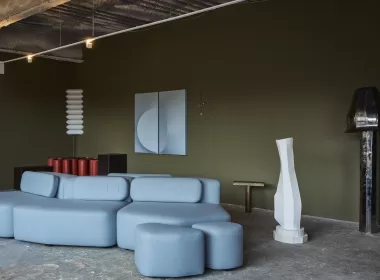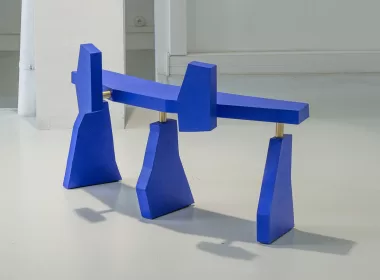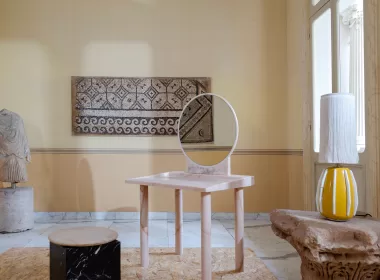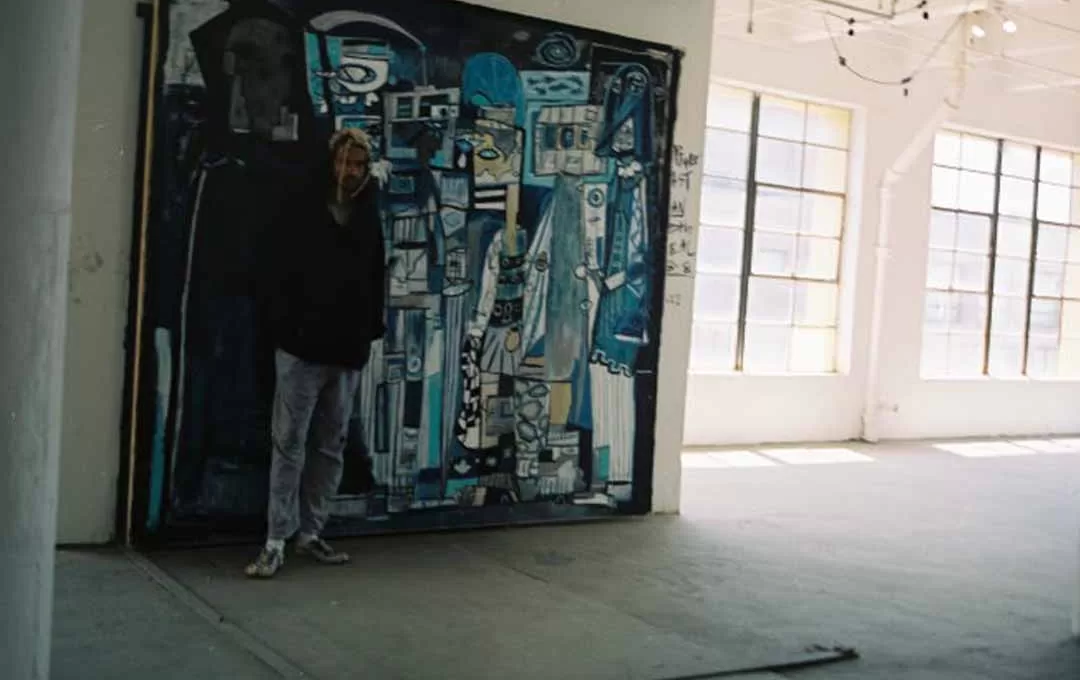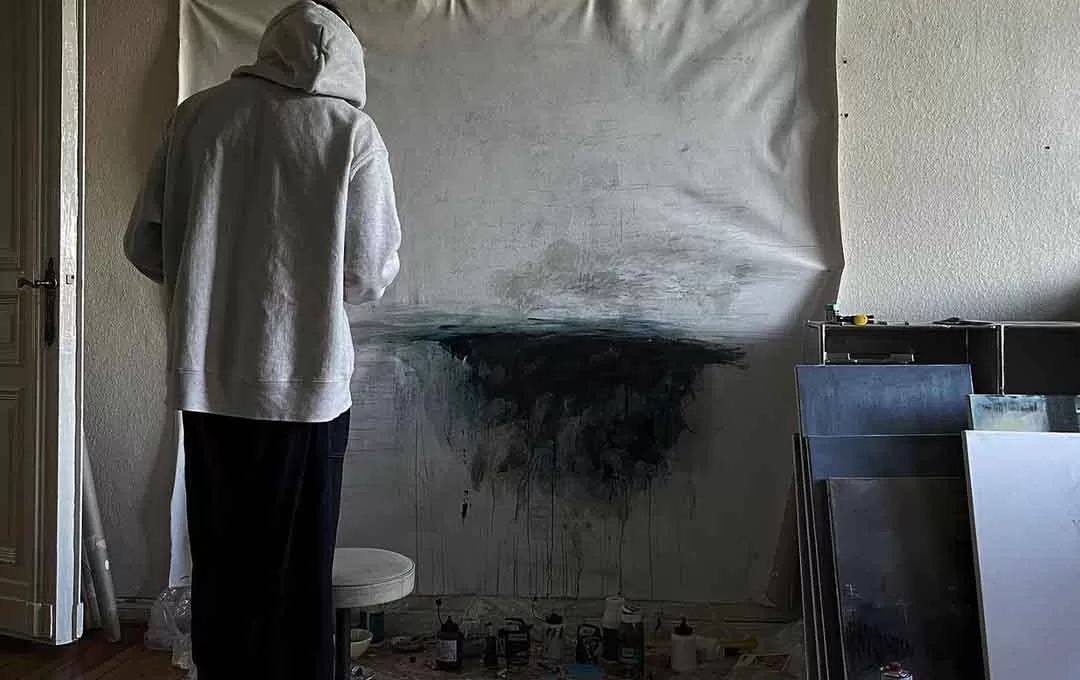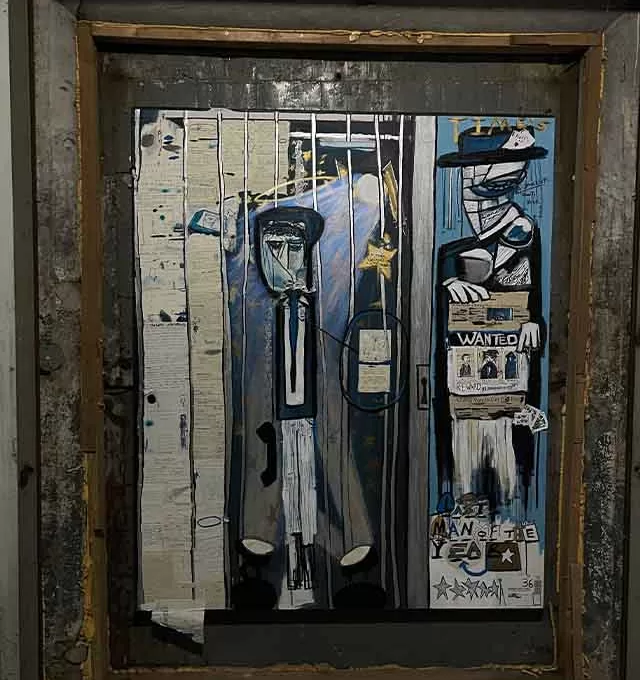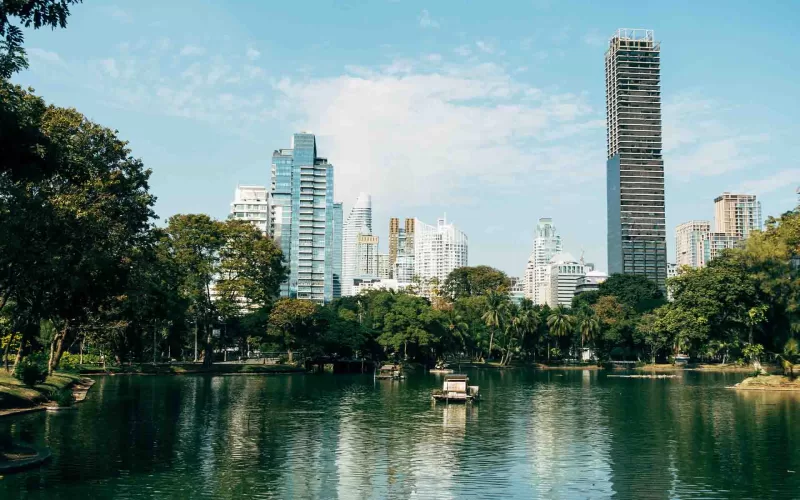Jet Le Parti is something of a mysterious figure, even for those who would readily devour his work. A young artist with the savvy of an autodidact, Le Parti distinguishes himself not only by restricting the bulk of activities to Brooklyn, but by the secrecy in which much of his output is shrouded. Most of Let Party’s exhibitions are private affairs; and unlike many other New York-based artists, he has highly developed critiques of the gallery-collector system. In Le Parti’s work, commodification is portrayed as a distorting reflection of real life. While he can’t outstrip living under capitalism, he doesn’t readily play ball with the fungibility of his work. He sees art as a “dead” or belated medium, and has originated his own habits and techniques from this standpoint.
As an extension of his own creative practice, Le Parti co-founded the project spaces Base 36 (currently in L.A.) and Relaispunkt. There’s a spontaneity to how he and his cohort operates which draws me to them. They’re too fluid to be labeled a “collective,” and they seem to be gaining commercial, artworld traction on their own terms. Interviewing Le Parti by phone and via google docs, I told him I felt like he was bringing back the energy of NY’s erstwhile downtown scene. I wanted to speak with him about the culture industry and mainstream cults.
What’s your full name?
Jet Le Parti.
Do you ever work under a nom de plume, or adopt a persona in your works?
No, but I work closely with artists who do. This separation provides them with a lot of freedom, allowing them to dissect their personal lives from their work. If I were able to start again, I’d follow that approach.
What was your last fully realized project, and what are you currently working on?
I’m currently refining my styles and finishing some ideas that have yet to be fully hashed out.
In my visual practice, I’ve been reflecting on my influences. I realized that modern movements with a heavy pre-21st-century aesthetic have indirectly influenced them. This has resulted in a body of work that may appear aesthetically out of sync with this exact moment, which is where I want to direct my full attention for a while. So, I’ve started focusing on a hyper-contemporary approach to create something that engages more deeply with the current experience, particularly regarding technique and themes.
Outside of this, the most significant body of work I’m wrapping up is a sound project I’ve been developing over the past year. I have also been collaborating with other members of Base 36 to help bring their projects to fruition. We’re working on a summarized exhibition for the coming months.
How do you assess the success of a work? Do you judge the merits of other people’s work the same way you judge your own?
I assess a work’s success by how well it lives up to its intent or breaks new ground in its language. If the quality or message doesn’t resonate, the work is destroyed or repurposed.
I can’t judge others by my standards, as their approach to their work may differ significantly. I can only assess their work based on their externalized or vocalized intent and aesthetic output. Outside of this, the work speaks for itself.
What is art to you, beyond being a mere commodity?
To me, art aims to convey, capture, reimagine, address, inspect, and transform the experienced world through deliberate effort using a medium, often devoid of utility beyond its own existence. It is an expressive method distinct from other creative mediums by its intent and language, with a lack of utility distinction being fundamental to its difference from designed works.
Commoditization is the outcome of the art object post-production, intertwined more with the artist’s signature than the work itself—it’s the entrapment of value and projection of significance onto the created goods. Art is unrelated to this unless it’s designed and conceptually intended as such. Some of my colleagues view commoditization as the sole reality, and they see no satisfaction in the reception of their work or concern for its context. For them, working within this context is their art and encompasses all of the authentic nature of the world they occupy.
In my work, commoditization is occasionally addressed as a reflection of life within this context. I can’t ignore living in this world, but I don’t need to focus solely on the concept of capitalism in my artistic practice. My approach considers art as a “dead” medium, and I try to work from a post-art perspective, accepting that these former ideas of art are arbitrary, outside the grander context of serving self-expression.
You have a background in philosophy. What inspired your interest, and are there any thinkers you routinely reference?
During my first university years, I was disoriented and needed a framework to comprehend the world around me, eventually discovering philosophy.
I started with the classics, progressing through a degree that covered all major fields of thought up to the contemporary leaders. Initially, I was a fan of the analytical branch, believing logic was the best approach to understanding the world. However, over the past few years, I’ve recognized this approach’s limitations and found a home with the progression of continental thinkers.
I am inherently more aligned with the Nietzschean lineage of philosophy, and my work and life have been deeply influenced by thinkers who have critically engaged with the progression of his ideas.
Would you say you’re reluctant to engage with the commercial art world?
Reluctance implies a choice, but capital often doesn’t provide alternative options. To reject it means to take it seriously. However, I don’t see anything serious within the commercial art world; to me, it’s just a codified theater. Even reluctance or rebellion to engage with it implies a response to something significant—as if it were real.
With this in mind, it feels disconnected from my practice, much like being in a different league in sports or maybe a different sport entirely. Engaging with it authentically feels logistically impossible, outside of utilizing it as a system of exchange, although this could be done artistically within the proper context.
Do you believe there are alternative approaches to how publications and discussions about art should be navigated?
It’s challenging to envision discussions around the arts that don’t serve as secondary services for consumption, especially when art seems increasingly disconnected from meaningful cultural impact. When pressing social or geopolitical circumstances arise, conversations around the arts often feel disconnected, diluted by prevailing capital interests and hidden intents. This is evident in instances such as Europe, the U.S., Venice, educational centers, and other institutions tasked with upkeeping critical thought and the progression of the humanities.
In this context, perhaps publications about art should start covering everything except art. Maybe art shouldn’t be discussed at all—this approach feels more genuine, more in the nature of expressing what reality needs or, better, what it is, placing art more in its relevant context to our world—as a background phenomenon, a trend, or a fashion, as it has been for years now.
In theory, Base 36 and Relaispunkt seem to harken back to New York’s great era of Downtown art spaces. Artists like David Wojnarowicz and galleries like Group Material come to mind. Any connection, or is this a reductive comparison?
While there might be surface similarities, I’d agree if there were elements truly capable of recreating what’s past. Artists like David Wojnarowicz and movements from that era had tangible goals and felt deeply embedded within their cultural milieu in New York. However, New York’s current cultural landscape doesn’t necessarily feel like a capable host of such momentum—at least in our time operating here.
Critically speaking, in a city where artists are priced out by inconceivable rent rates and intellectual discourse often devolves into superficial conversations with elitists, cultural vultures, and performative wokeism, it’s challenging to offer revolutionary expressions and even more difficult to build any sense of a genuine, willing community engaging with such ideas. Reflecting on the candidates for such a goal is fatiguing when you assess the field.
The scenes and city are dominated by face-value liberalism, privileged children, and a millennial generation that resists maturing outside of their consumption bubbles- ironically, these parties are often connected to the deepest pockets of capital in the world through service or birthright yet are the weakest in the sense of taking tangible action towards change.
Even becoming acquainted with these groups demands social finesse, aesthetic recognition, ego-stroking, patience, and synthetic scene generation—elements often unrelated to the creation of the art itself and innately toxic to the development of authentic communities. Hence, with this context in mind, at least in our projects, contemporary exhibitions often feel more like produced simulations than visceral cultural statements. Thus, I don’t think there’s a community in the traditional sense around our work, and I feel that we’re certainly not involved with a format of a “great era” as in past cases. This would be different in an ideal world, but in this reality, this is our circumstance.
Do you have any artistic influences you look up to?
While I won’t name specific influences, I love art in its totality, and these days, I find the people around me to be the most influential on my work.
In a visual sense, there’s no one I necessarily look up to with the desire to emulate them as characters. However, there are many whose works I deeply respect, resonate with, and appreciate for various reasons, especially those who create challenging work and concepts that inspire me to push boundaries.
Do you watch movies or television? Anything you’d recommend?
Occasionally. I wouldn’t recommend anything.
What sort of music do you go out to see most often?
I’ve spent years immersed in electronic music and have grown a lot through it & the environments around it. However, whether due to getting older, changes in the scene, or a disconnect from a new surge of participants, I no longer feel the urge to go to venues as often.
I still enjoy going out from time to time, but generally, I only attend personal bookings or events to support friends.
What’s next?
Regarding Base 36, we’ll move our project west for a trial run in Los Angeles, likely with a group exhibition in the coming month or two within the downtown area. We also have a location in London that we’ll begin to bridge into – aiming to get things off the ground by early 2025.
As I mentioned before, in terms of my practice, I’ll keep working towards reflecting on the aesthetics of contemporary life and assisting with the direction of the projects on the backend.


